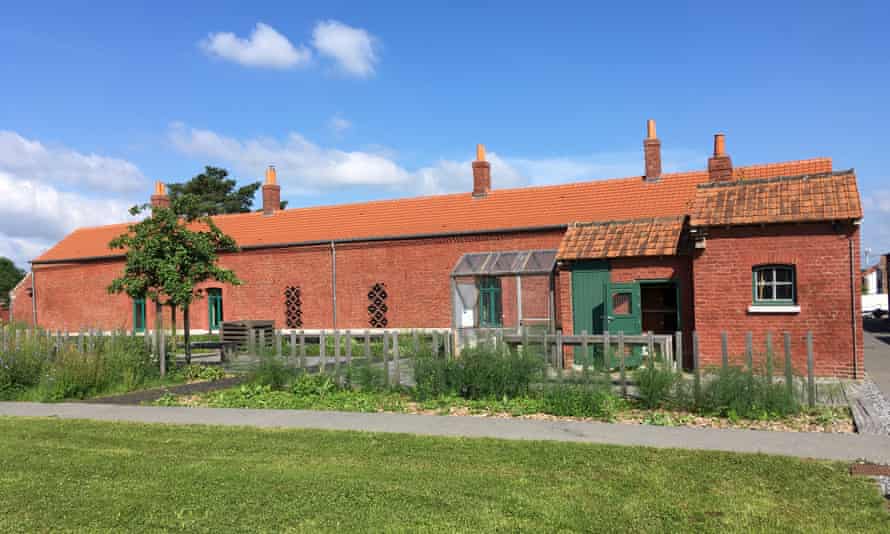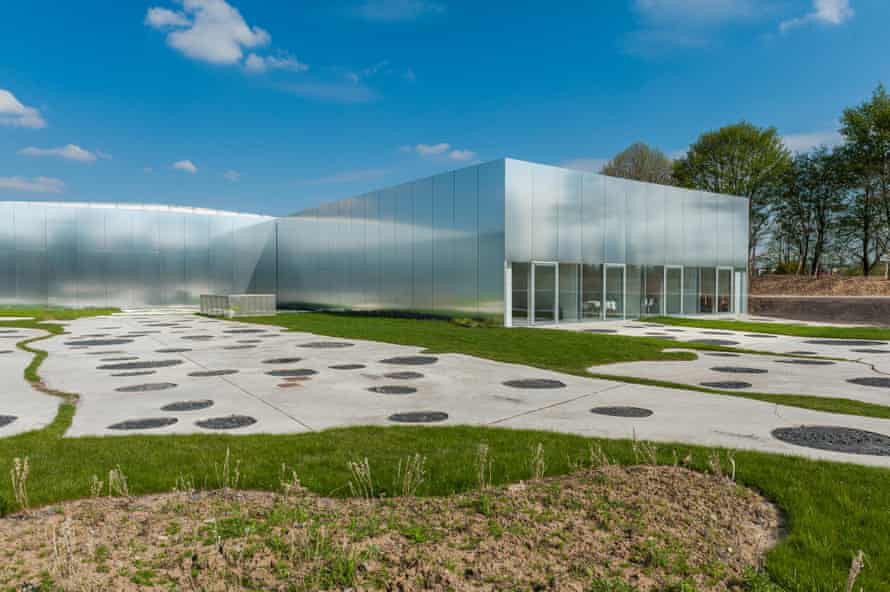A holiday at the Cité des Électriciens in northern France may not sound like a glamorous getaway, but there are some genuine surprises to be discovered in the unspoiled region by the Belgian border, a short drive from Calais or Boulogne. The Louvre has established a satellite museum in Lens, while the lesser-known city of Béthune boasts fabulous art deco architecture, artisan breweries and exciting young chefs reinterpreting local recipes. The sandy beaches and dunes of the wild Côte d’Opale are never far away, but what really takes my breath away is discovering a vineyard halfway up a former slag heap, all that is left of the region’s coalmines. Fittingly, the vigneron has dubbed his crisp white wine not chardonnay but charbonnay – a pun on the French for coal, charbon.
The Cité des Électriciens is actually all about miners rather than electricians. The village was purpose-built in the 1850s for local pit families, partly in response to the scandal caused by Émile Zola’s exposure of working conditions in his novel Germinal, partly to ensure the miners’ loyalty by creating a benevolent environment. It was one of several model townships across the French and Belgium coal belt, built by mining barons. Its name dates from the turn of the century, when the local post office asked for streets to be named, for easier delivery of mail – hence Rue Edison and Rue Marconi, among others.
The Cité today resembles a miniature toy town, with neat rows of houses in red bricks rather than Lego. It was officially reopened in 2019 after a six-year, €15m restoration, but then the pandemic intervened and only now is it finally fully open to visitors. The 43 houses that were once home to mining families have been transformed into an imaginative base for discovering the surrounding countryside.

A tiny cottage is a comfortable B&B (€60 a night), and a row of houses has been converted into four roomy self-catering gîtes, with retro furniture and wallpaper. There’s also space for artists working on community projects, who organise ateliers and talks for local schools. And, importantly, 10 houses are reserved for low-income families.
Pride of place goes to two permanent exhibition halls. One is a modern, purpose-built space illustrating the long history of mining here up to its recognition as a Unesco world heritage site in 2012. The other recreates daily life in the Cité, in five original homes through oral history recordings, photos and numerous reminders that behind this utopian experiment, the mine owners were operating what the French call “controlled liberty”. So while there were opportunities for education, sport, vegetable gardens and modern housing, the workers were also encouraged not to drink, and to start families, so as to provide the next generation of miners.
The mineworks and shafts once dominated the adjoining town of Bruay-La-Buissière, though most have been demolished since their closure in 1979. But the surrounding countryside is still marked by volcano-like slag heaps, rising up to 150 metres, albeit now covered in thick vegetation. However, the terril outside the hamlet of Haillicourt looks strangely different from the rest, with neat lines of steep terraces just below the peak, which turn out to be one of the world’s strangest vineyards.
“It is now eight years since the first harvest on our historical terril,” says Flavien Desette from Haillicourt’s town hall, “and our chardonnay, which we have christened ‘charbonnay’, is getting respected reviews and featuring on the wine lists of restaurants around France, so now numerous other winemakers are looking at planting vineyards around here.”
So far, production is limited to about 3,000 bottles, and tours of the vineyard and the tiny vaulted cellar beneath Haillicourt’s 18th-century priory can be organised through the town hall. Visit during the harvest and you will see 50 villagers picking grapes by hand, then hand pressing them. At certain times of year, the terril literally starts steaming, thanks to the combustible but fertile mix of schist and soil. It’s a quite unique terroir.

The Cité des Électriciens lies between two very contrasting, historic northern French cities, Lens and Béthune. Both are near the great battlefields of the first world war, and had been largely razed to the ground by the time peace was signed. Béthune was beautifully rebuilt in art deco style, especially the opulent town square whose medieval belfry miraculously survived, and is now part of the Unesco world heritage site. The Grand Place is the life and soul of the city, lined with bistros, brasseries and traditional estaminet bars. And just off the main square, a magnificent mansion is being brought back to life by a creative young chef, Maxime Leplat and his wife, Noémie. The sumptuous ground floor with soaring ceiling and crystal chandeliers is split into a casual bistronomie-style dining room – offering a three-course set lunch for €29 – and a fine dining section where Maxime is determined to earn his first Michelin star.
Adventurous foodies signing up for the tasting experience are led straight to the kitchen and a marble table opposite the imposing bearded figure of Maxime. While his enthusiastic assistants rush around prepping dishes, the chef conjures up half a dozen unexpected appetisers, often paired with local craft beers, that include a delicate macaron of tomato and shrimps, a molecular take on the traditional mackerel in mustard sauce, a beef carbonnade in a marshmallow and a mini croque-monsieur with pungent local Maroilles cheese topped with pickled herring. The biggest surprise, though, is the bill at €48 a head. During the long lockdown, Noémie and Maxime renovated four rooms above the restaurant into fashionable B&B accommodation (doubles €95).

Lens did not fare so well during its postwar reconstruction and is in a messy mix of styles that for a long time left the city best known for its fanatical football club. That all changed when an agreement was made with the Louvre to build its first satellite museum in France here, which opened in 2012. While the futuristic architecture of Louvre-Lens is breathtaking, what really surprises the visitor is the contrast, as a viewing experience, with the Paris musesum. The immense permanent collection, of which 20% rotates each year, is in a revolutionary single open area. I have certainly never seen a museum space like this: in one room you pass from paintings and sculptures dating from 3500BC to ones created in 1850.
Benoît Diéval of the local tourism office says: “The museum has really changed Lens profoundly. Not just opening a new world of art for the population, but having an enormous impact on the local economy. That has meant not just jobs in the museum, hotels and restaurant, but stimulating a whole series of startup community projects in design, textiles and artisan ales.”
The museum celebrates its 10th anniversary in 2022, so a visit this autumn could mean avoiding the inevitable big queues next year.





